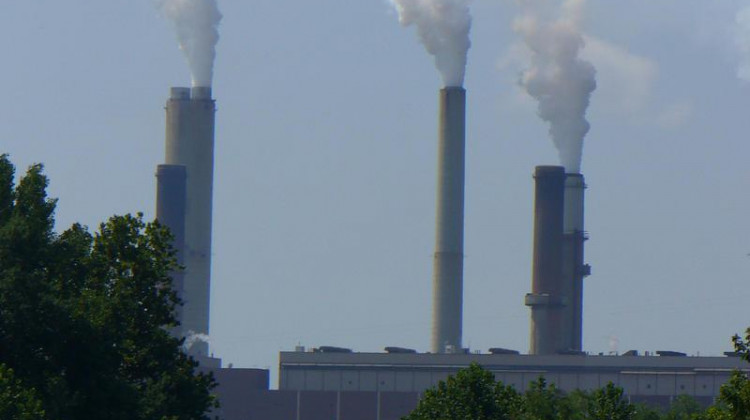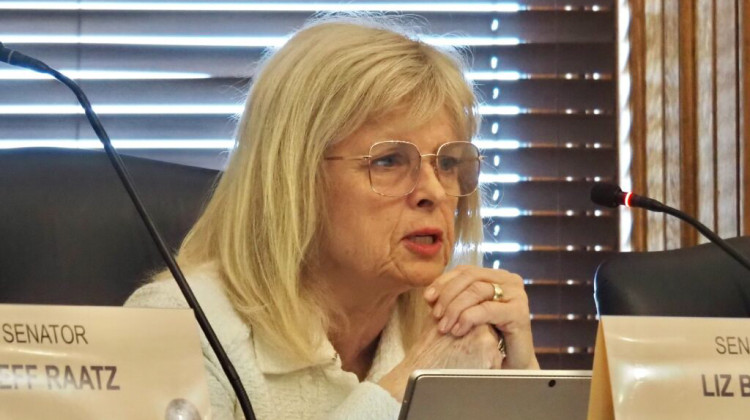
Duke Energy's Gibson Generating Station could retire completely by 2035, if Duke's long-term plan remains the same.
(Wikimedia Commons)Updated Nov. 22
According to Duke Energy Indiana's latest 20-year plan, the utility plans to be coal free by 2035 and have about 60 percent of its generating capacity be renewables in the next two decades — that includes energy efficiency and what's called demand response.
Duke’s plan speeds up the retirements of its coal units by an average of four years. It also hopes to add more than seven thousand megawatts of wind, solar, and energy storage. The solar capacity would be four times as much as what's currently installed in the state.
“Obviously, we'll be reducing carbon emissions significantly by 2030 and 2035. So it's a significant plan for us," said Stan Pinegar, state president for Duke Energy Indiana.
Pinegar said it also diversifies Duke's energy sources. Duke plans to keep its coal gasification plant in Edwardsport running — either converting it to natural gas or storing its carbon emissions underground. The company would also add a new natural gas plant.
But climate activists in Indiana say the plan doesn’t keep pace with what’s needed to curb the worst effects of climate change. Wendy Bredhold is with the Sierra Club’s Beyond Coal campaign in Indiana. She said Duke needs to stop burning coal by 2030 and replace it with renewable energy.
“Immediately proposing gas replacement is climate disaster. That's not the outcome that we're looking for. It's not what their customers are asking for. It's not what the dozens of city, state and local elected officials are asking for from them," Bredhold said.
Bredhold also said making Duke customers pay for carbon capture and storage — a technology that has not yet been proven — would be a mistake.
Storing carbon emissions underground has been the subject of a lot of debate at the Indiana Statehouse and around the country. Officials with the Citizens Action Coalition have said the practice encourages utilities to continue to pollute instead of finding ways to cut emissions. Though more research needs to be done, some studies suggest CO2 injected underground could cause earthquakes or contaminate drinking water.
Join the conversation and sign up for the Indiana Two-Way. Text "Indiana" to 73224. Your comments and questions in response to our weekly text help us find the answers you need on statewide issues.
But some scientists say, to get climate change under control, we’ll also have to take CO2 out of the air. Money in the recent federal infrastructure bill has been set aside to further study the technology and whether it would work. Indiana has also approved a pilot program in Terre Haute.
Pinegar said carbon capture and storage may not be a viable technology right now, but that doesn’t mean it won’t be down the road.
Investor-owned utilities in Indiana make these long-term plans every three years. So Duke officials say nothing is set in stone. About 500 people work at Duke’s coal plants around the state.
This story has been updated.
Contact reporter Rebecca at rthiele@iu.edu or follow her on Twitter at @beckythiele.
Indiana Environmental reporting is supported by the Environmental Resilience Institute, an Indiana University Grand Challenge project developing Indiana-specific projections and informed responses to problems of environmental change.
 DONATE
DONATE






 Support WFYI. We can't do it without you.
Support WFYI. We can't do it without you.